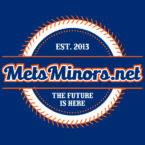
Matt McLain
As the weeks start counting down until the July MLB Amateur Draft and various outlets’ mock drafts start to become more refined with sourced intel, we will start taking a more detailed look at the hot names that are being linked to the Mets with the 10th overall pick.
Last week, ESPN’s Kiley McDaniel released his first mock, and the Mets landed UCLA standout shortstop Matt McLain.
Even if you’re not an avid consumer of collegiate baseball, the name might already sound familiar to you, as McLain was drafted 25th overall by the Diamondbacks in 2018 but did not sign in lieu of his commitment to UCLA.
The first thing that jumps out at you about McLain, 21, is that at first blush, nothing terribly jumps out at you. And yet, I’m going to make the case that he brings sufficient skills to the table to be worth the 10th overall pick in this year’s draft.
While his 5′ 11″ and 180 lb frame doesn’t portend big raw power, McLain should not be confused with a slap and dash hitter. Before a broken thumb likely just ended his season earlier this month, McLain was slugging at a .578 clip through 40 games, including nine long balls. This performance track record is now an extension of his brief breakout sophomore campaign (.621 slugging % in the COVID shortened 13 game campaign), and lends credence to a projection for McLain to hit for average big league power.
As the rest of the package comes into focus, and you can see why McLain’s floor might be quite high among all draftees, his ceiling should not be dismissed.
The first thing McLain has going for him is a sure fit in the middle of the defensive spectrum. He has played plenty of shortstop as an amateur, and also played center field his freshman season at UCLA. While some question whether McLain has enough arm strength to make all of the shortstop throws at the next level, he has excellent hands, actions and range to play a plus second base.
Now, one could argue that McLain’s strongest raw tool is his legs. Equipped with above average to plus speed, a projection for plus base running helps to add some shine to an extremely well-rounded skillset.
Ok, so that leads me to the most important point to be seen here: Matt McLain can hit.
In an era where the MLB batting average (BA) is hovering in the .230’s, and hitters are being continually challenged with unprecedented velocity up in the strike zone, I posit that nothing is more crucial in a draft prospect than projecting their future ability to handle velocity at the letters.
McLain, armed with modest levers, the ability to pull his hands in and hit pitches on the inner half, and a long track record of established bat to ball ability, would appear to check this vitally important box.
McLain’s hit tool has long been held in high regard, going back to being the driving force behind his first round selection three years ago. In fact, not only did he buttress his .397 BA from last year with a .325 mark this year, he showed real growth in his zone awareness, walking 29 times to only 26 strikeouts against Pac-12 pitching.
While history tells us that the short-term needs of the big league club will not interfere with Tommy Tanous and Marc Tramuta from selecting who they feel will be the best ball player, a Matt McLain selection does make good sense in that regard.
As a collegiate player with a polished hit tool and the skills and athleticism to play an up-the-middle position, a relatively quick ascent to a ready-to-win Mets big league roster that is crowded with corner-only defensive fits would at least become a positive result of a McLain selection.
Time will tell what happens to McLain and the Mets first pick this summer, but that time is ticking to a close, and he’s certainly a name to keep in mind should those stars align.

